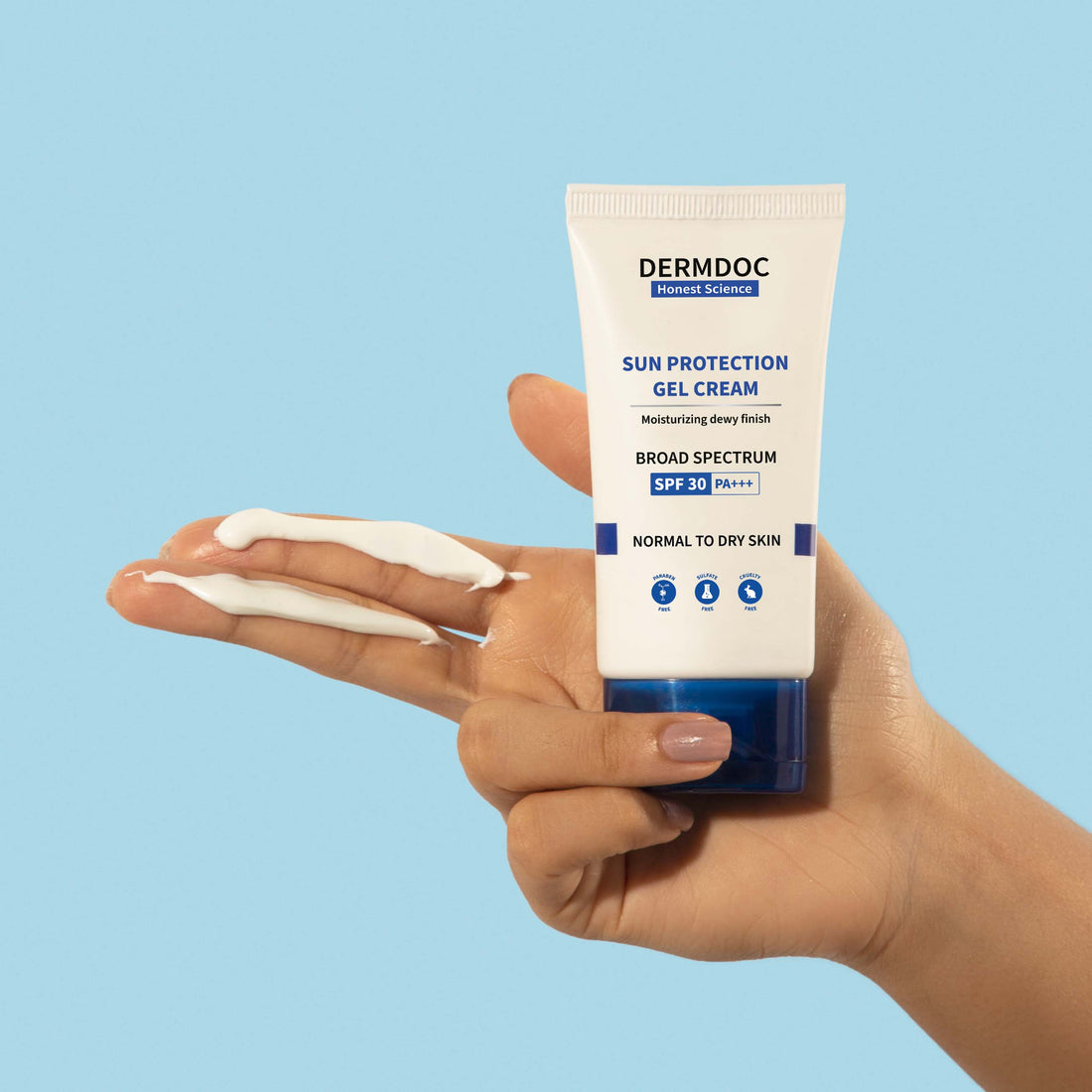
If you’re new to the skincare game, you might be wondering what all this hype around sunscreen is about.
What are the benefits of SPF? Is sunscreen necessary in winter? Is sunscreen required for Indian skin?
If you’re a weathered sunscreen user but still not convinced, you might even be looking for reasons not to wear sunscreen.
Whatever stage you are at in the skincare process, we are here to give you a little behind-the-scenes tour of the great big– and very confusing– world of SPF.
To understand what are the benefits of SPF, let us understand what it first is.

SPF stands for Skin Protection Factor. What does your skin need protection from? Well, from the great big evil sun.
Nah, just kidding. All sunlight is not bad. Unless you’re a vampire. But then if you’re a vampire, then you probably won’t be looking at this article anyway.
At any rate, the only way you can escape needing sunscreen is if you are a vampire. Because the sun emits this amazing thing known as ultraviolet light. It reaches us in the form of UV rays. UV rays can cause a lot of damage to human skin.
In fact, they are the primary cause behind premature ageing in most people (upto 80% of our ageing is caused by UV rays) and accelerate wrinkling as well as cause issues like acne and hyperpigmentation to flare up. One of UV rays’ deadliest side effects is skin cancer.
Skin Protection Factor is a rating that helps you understand how strong a particular cosmetic’s power against UV rays is. It can be used to describe the contents of sunscreen, sunblock, sun protection gel cream, or any other form of cosmetic sun protection.
The way that sunscreen or sunblock works is that it contains UV ray blockers. UV blockers are also of two types – UVA-A and UV-B, as UV rays emit both forms of radiation. UV-A rays are the ones that can accelerate ageing whereas UV-B rays are the ones that cause cancers to form. Ideally, you would like to use a broad-spectrum form of sun protection, which covers both UV-A and UV-B rays.
Now, what are these UV blockers?
There are two types of sunscreen: physical– a.k.a mineral– and chemical. Each of them uses a different type of UV blocker to protect the user’s skin from the UV rays.
UV blockers in terms of physical sunscreen include zinc oxide and titanium dioxide amongst others that essentially act as a bouncer to the UV rays and deflect them. Chemical sunscreens include oxybenzone, octinoxate and others that, instead of bouncing the UV rays away from the skin, absorb it and convert it into heat, which is then expelled from the body through natural processes.
Each type of sunscreen has its own advantages and disadvantages, but rest assured, whichever one you pick, it is better than going in the sun with your bare skin and getting burnt without even realising it.
Sunscreen Basics
Now that you know what SPF is, let’s delve a little deeper into some of the technicalities you might want to address as a sunscreen novice.
Is sunscreen necessary in the winter?

You might think that, since the sun feels stronger during the summer months, you may not require sunscreen in the winter. But you couldn’t be further from the truth!
UV rays reach you no matter what the weather is outside. In fact, it is good practice to wear sunscreen even during a rainstorm, because UV rays are ultimately light and they do not care about the climate conditions you are living through. They penetrate clouds easily because clouds are just water, as the cold never stops them!
Is sunscreen required for Indian skin?
Another common misconception is that brown skin or Indian skin in specific doesn’t need SPF. Again, the sun doesn’t care! It’s all rays of light. UV rays don’t care what colour you are or where you live, how much you earn, or where your ex likes to take his dog on a walk. None of it matters! Skin is skin.
Now, there is some science behind this logic. Melanin, the substance that pigments skin (the reason why some people are born with darker skin than others) does offer some light form of natural sun protection. But, not even close to enough. People with brown skin need to use sunscreen with an SPF 30 minimum, so let’s get to that …

Is SPF 30 enough? Should I go higher or lower?

According to dermatologists, SPF 30 is the bare minimum that your skin requires to protect itself against UV rays. Stronger sun may warrant SPF 50 or higher. Considering the geographic position of India being so close to the equator, it is safe to say that Indian skin may require a teensy more than SPF 30 when it comes to going out in the strong sun, but SPF 30 should be enough for everyday life. Which brings us to …
How to use sunscreen everyday?
If you are new to the world of skincare, this information overload can get a little overwhelming. But don’t worry, we are here to give you a step by step breakdown.
- Start with a clean and dry face
SPF needs a dry slate to function. Wash your face with your favourite cleanser and then pat it dry using a soft cloth or cotton towel
- Spread two fingers’ worth of sunscreen in your hand

Ideally, this amount should look something like this:
Yes, it looks like a lot. But trust me, you need it!
- Blend it into your face
Much like foundation, physical sunscreen requires blending as some leave a whitecast. But we have some great recommendations for physical sunscreens that don’t leave a whitecast below– be sure to check it out!
- Reapply!
This step is crucial to your skin protection strategy. You have to make sure you are reapplying your sunscreen every 2 hours when outdoors and every 4 hours when indoors. This is because the SPF gets rubbed off in the natural course of the day as you touch your face, you sweat, or your skin gets exposed to the outdoor environment.
And that’s it! Once you’ve mastered these 4 steps, you’re good to go!
Our Personal Favourites
Now, as promised, here are some Dermdoc product reviews for SPF 30 and SPF 50 sunscreens for Indian skin at an affordable price point and that are great quality too.
1. DermDoc by Purplle UVA & UVB Broad Spectrum Sun Protection Gel Cream With SPF 50 & PA+++

This sunscreen is just the right amount of dewy to get that fresh Instagram glow. It has a mild fragrance and spreads easily. The best part? No whitecast! Priced at INR 275 for 50 grams, it’s very cost-effective as well.
2. DermDoc by Purplle UVA & UVB Broad Spectrum Sun Protection Gel Cream With SPF 30 & PA+++

For dry-to-normal skin, this one is a heaven-send. Physical sunscreen tends to block pores but this one is pretty non-comedogenic, and to top it off, it gives a nice finish, just like this sun protection gel in the SPF 30 form!
Hopefully this article helped provide some clarity. You can check out our blog for more.

